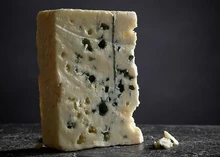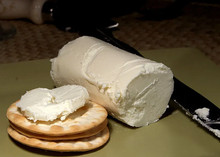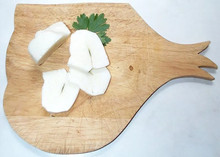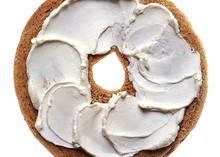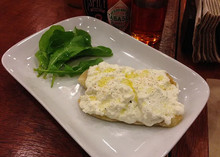
Substitutes for Blue Cheese
When it comes to blue cheese, its unique tangy flavor and creamy texture can be a delicious addition to a variety of dishes. However, what if you find yourself in a situation where you don't have any blue cheese on hand? Don't worry, there are several alternative options that can provide a similar taste and texture. In this article, we will explore some popular substitutes for blue cheese and discuss their similarities, differences, and best uses.
Is Blue Cheese Similar to Goat Cheese?
Goat cheese, also known as chèvre, is a versatile dairy product that can be used as a substitute for blue cheese. While the flavor of goat cheese is distinctively different, it shares some similarities with blue cheese. Both cheeses have a tangy taste and pair well with flavorful teas & wines, but blue cheese tends to have a more pungent and intense flavor compared to the milder and creamier goat cheese. Additionally, blue cheese has the characteristic blue veins running through it, while goat cheese is typically white or off-white without any mold. Depending on the recipe or dish, goat cheese can be a suitable replacement for blue cheese, especially in salads, sandwiches, and spreads.
Is Blue Cheese Similar to Cream Cheese?
Cream cheese and blue cheese are not particularly similar in terms of flavor or texture. Cream cheese is mild, creamy, and spreadable, whereas blue cheese has a strong and assertive flavor with a crumbly texture. While cream cheese can't exactly replicate the distinctive taste of blue cheese, it can still add a creamy element to dishes that call for blue cheese. For example, you can mix cream cheese with a tangy ingredient like lemon juice or vinegar to create a creamy and tangy spread that can mimic some aspects of blue cheese when used in recipes like dips or dressings.
Is Blue Cheese Similar to Feta Cheese?
While blue cheese and feta cheese are both popular choices for salads and other savory dishes, they possess distinct differences. Feta cheese is a crumbly white cheese with a tangy and salty flavor profile, whereas blue cheese is stronger, richer, and has a characteristic moldy flavor. Despite their differences, feta cheese can be used as a substitute for blue cheese in salads or crumbled on top of pizzas or pastas if you are looking for a milder and less pungent option. Keep in mind that the flavor profile of the dish will change, but feta cheese can still provide a delightful tangy element in its place.
Is Blue Cheese Similar to Cottage Cheese?
Cottage cheese and blue cheese are quite different when it comes to taste and texture. Cottage cheese is a fresh cheese with a mild and slightly tangy flavor, while blue cheese has a distinct sharpness and intense flavor. Additionally, blue cheese is known for its crumbly texture, while cottage cheese has a moist and curdy texture. Although these differences may not make cottage cheese an ideal substitute for blue cheese on its own, it can be used as a base ingredient to create a creamy and tangy dressing or dip when combined with other flavorful ingredients like herbs, spices, or even a touch of vinegar.
Is Blue Cheese Similar to Ricotta Cheese?
Ricotta cheese and blue cheese are diverse in taste, texture, and culinary uses. Ricotta cheese is a mild, creamy, and slightly sweet cheese made from whey, while blue cheese has a stronger, tangier, and sometimes even pungent flavor. Ricotta cheese is typically smooth and moist, while blue cheese has a crumbly texture. While ricotta cheese cannot fully replicate the taste of blue cheese, it can be used as a substitute in dishes where a creamy element is desired. For example, you can create a creamy blue cheese-inspired sauce by combining ricotta cheese with ingredients like lemon juice, garlic, and fresh herbs.
Is Blue Cheese Similar to Parmesan Cheese?
Blue cheese and parmesan cheese are distinctively different in terms of flavor, texture, and culinary uses. Parmesan cheese is a hard, aged cheese with a salty and nutty flavor, while blue cheese has a strong and tangy flavor profile with visible blue veins running through it. Blue cheese is crumbly, while parmesan is often grated or shaved. While parmesan cheese cannot replicate the unique taste and texture of blue cheese, it can still be used as a substitute in certain dishes to add a savory and umami element. For example, you can grate parmesan over pasta or risotto instead of blue cheese, adding a rich and salty twist to the dish.
Is Blue Cheese Similar to Gorgonzola?
Gorgonzola is a blue cheese Gorgonzola has a creamy and crumbly texture, similar to blue cheese, and boasts a strong, tangy, and slightly sweet flavor profile. The primary difference between Gorgonzola and generally nominated blue cheeses lies in their place of origin: Gorgonzola hails from Italy, while blue cheese can refer to various types of cheeses from around the world., Gorgonzola can be used as an option for blue cheese in numerous recipes, especially those that call for a milder and creamier blue cheese alternative.
Is Blue Cheese Similar to Roquefort?
Roquefort is a blue cheese made from sheep's milk and has a distinct flavor and aroma. Its taste is robust, tangy, and slightly salty, similar to other blue cheeses. Roquefort can be crumbly or creamy, depending on the specific variety. Roquefort can be an excellent option when used in dishes where general blue cheese is called for, whether crumbled onto a salad, melted into a sauce, or spread on a crusty piece of bread.
In Conclusion
While general blue cheese offers a unique taste experience, it is helpful to know that alternatives can be found when needed. Goat cheese and feta cheese, cheese can provide similar textures profiles if you want a substitute that maintains some aspects of blue cheese. Other options like cream cheese, cottage cheese, ricotta cheese,, parmesan, and even gorgonzola can bring their own flavors and textures to a dish that you want to infuse with a creamy or tangy element. Experiment with these substitutes to find the one that best suits your taste preferences and desired culinary outcome. Happy cooking!



